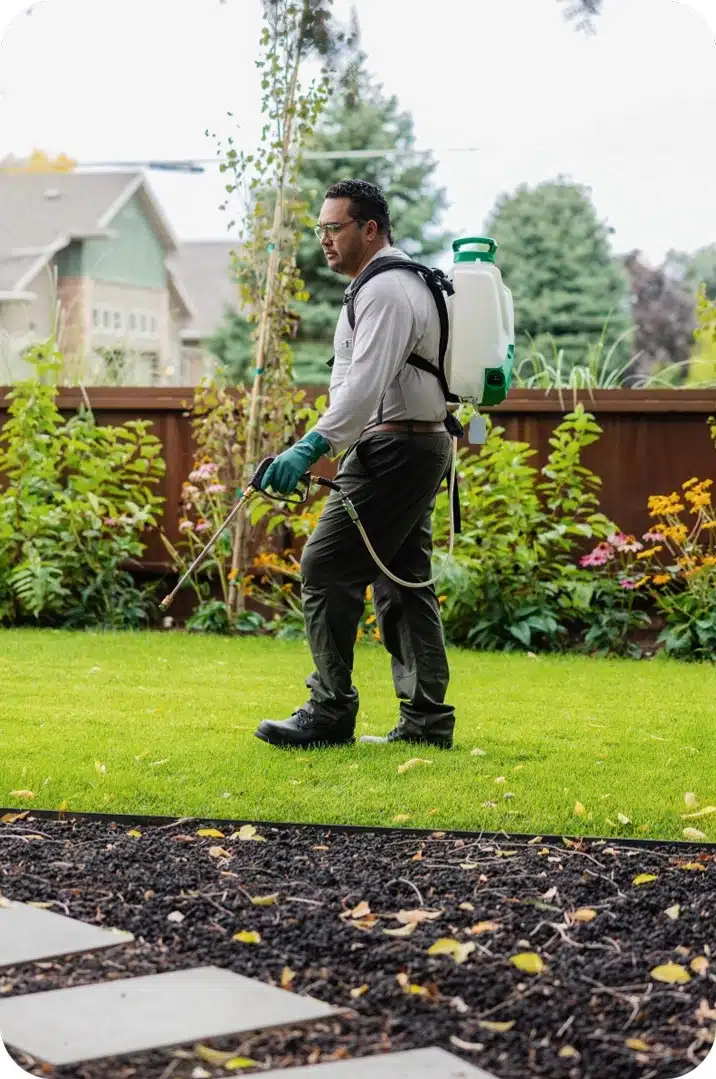Bed Insect Treatment Failure: Comparing Chemical Vs. Non-Chemical Solutions
In the world of parasite control, particularly when handling the persistent issue of bed pests, the option between chemical and non-chemical therapy services can be a crucial one. Both approaches provide distinct advantages and drawbacks, influencing variables such as effectiveness, security considerations, and general cost. By checking out the nuanced details of each method, a clearer understanding of which path to pursue in addressing a bed pest invasion can be attained.
Performance of Chemical Therapies
Chemical treatments for bed insect invasions have actually been commonly identified for their quick and potent efficacy in removing these parasites. When taking into consideration the effectiveness of chemical treatments, it is essential to understand that they can offer a complete and quick option to a bed pest trouble. Professional pest control men commonly rely upon pesticides to target bed insects at various stages of their life process, including eggs, adults, and fairies. These chemicals typically work by interfering with the bed insects' nerves, causing paralysis and eventual death.
Furthermore, chemical therapies have the benefit of using recurring results, suggesting that they can remain to eliminate bed bugs even after the preliminary application. This recurring action is particularly helpful in combating any kind of potential re-infestations. Furthermore, the quick activity of chemical treatments can bring alleviation to individuals facing extreme bed bug invasions, allowing them to restore control of their living spaces promptly.
Safety And Security Worry About Chemical Solutions
One critical facet that needs careful consideration when using chemical services for bed pest treatment is guaranteeing the security of owners and the atmosphere. While chemical treatments can be reliable in eradicating bed bugs, they might present dangers if not handled correctly. Among the main safety issues with chemical solutions is the possible injury they can create to human wellness. Direct exposure to particular chemicals used in bed bug therapies can cause breathing problems, skin irritation, or various other unfavorable responses, particularly in individuals with pre-existing problems or level of sensitivities. In addition, incorrect application or dosage of chemical pesticides can result in hazardous residues sticking around in the cured location, positioning long-term health threats to occupants.
Furthermore, the environmental impact of chemical options is another significant consideration. Some pesticides made use of in bed insect therapies might be dangerous to valuable pests, wildlife, and environments if they seep into the dirt or water supply. It is vital to use chemical treatments sensibly, following security standards, and taking into consideration much less poisonous alternatives to mitigate these threats and make certain the safe and efficient management of bed pest problems.
Benefits of Non-Chemical Methods
Considering the prospective safety problems and environmental effect associated with chemical options for bed insect therapy, discovering non-chemical methods offers an appealing alternative with several distinct advantages. Non-chemical treatments recommended you read are eco friendly, as they do not contribute to air or water contamination, making them a lasting selection for parasite control.
Furthermore, non-chemical solutions can be efficient in targeting bed insects, including hard-to-reach areas where chemical treatments may not penetrate. Methods such as warmth treatment, vacuuming, steam cleaning, and bed mattress encasements give extensive obliteration without making use of damaging chemicals. Moreover, non-chemical strategies can be less disruptive, needing minimal prep work and enabling for quicker reentry right into dealt with areas. On the whole, choosing non-chemical bed pest therapy techniques not only prioritizes security and environmental security but also guarantees detailed and effective bug control.
Limitations of Non-Chemical Treatments

In addition, non-chemical treatments commonly require multiple applications to attain effective eradication. This can be time-consuming and might not always ensure full elimination of all bed bugs and their eggs, particularly in hard-to-reach or covert areas.
Furthermore, the success of non-chemical therapies heavily depends on proper application and thoroughness, which can be challenging for people without specialist proficiency. Inadequate application of non-chemical techniques may lead to insufficient elimination, leading to consistent infestations and the demand for extra treatments.
For that reason, while non-chemical treatments have their benefits, it is important to acknowledge these limitations and consider them when determining one of the most effective method for managing bed insect problems.
Price Comparison: Chemical Vs. Non-Chemical Options
Provided the limitations related to non-chemical therapies, an essential aspect to examine in the context of bed pest administration is the expense contrast between chemical and non-chemical options. Chemical therapies usually involve the application of content insecticides by experts, which can vary from $250 to $900 per room, depending on the seriousness of the invasion and the size of the location to be treated. In comparison, non-chemical therapies like warmth treatment or steam can be extra pricey, with expenses varying from $1,000 to $6,000 for a whole home. While the initial cost of chemical therapies may seem reduced, multiple treatments may be called for to completely get rid of the problem, potentially raising the overall price. On the other hand, non-chemical choices may offer a much more environment-friendly and lasting solution, although they can be cost-prohibitive for some people. Inevitably, when considering the cost of bed pest treatment options, it is essential to evaluate the in advance expenditures versus the effectiveness and lasting sustainability of the picked approach.
Verdict

Considering the potential security worries and ecological impact associated with chemical services see for bed pest treatment, exploring non-chemical techniques offers an encouraging alternative with several unique benefits.Offered the limitations linked with non-chemical therapies, an essential aspect to assess in the context of bed insect monitoring is the price comparison between chemical and non-chemical options. In comparison, non-chemical treatments like warmth therapy or steam can be a lot more costly, with expenses varying from $1,000 to $6,000 for an entire home. While the first cost of chemical treatments may appear lower, numerous treatments might be called for to fully remove the invasion, potentially enhancing the overall expense.In conclusion, when contrasting chemical and non-chemical bed bug treatment options, it is crucial to consider performance, safety and security, benefits, limitations, and price.